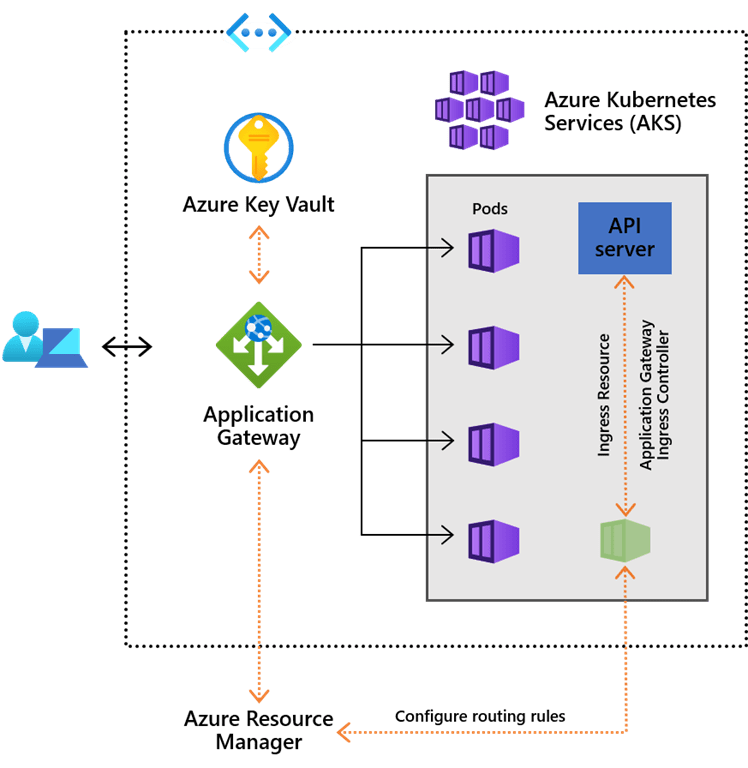More Speed & Scaling with Azure’s App Gateway Ingress Controller
In the wake of the Coronavirus pandemic, en masse transition of companies across the globe to working-from-home has made efficient cloud use more crucial than ever for companies of all sizes. Azure’s latest release, Application Gateway Ingress Controller, answers companies’ ever-expanding needs with fast and reliable cloud technology that drives performance and optimizing computing resources, even as load increases.
What is Application Gateway Ingress Controller?
The Application Gateway Ingress Controller (AGIC) for Azure and AKS is a new technology that leverages the cloud to achieve top performance and speed for cloud applications. AGIC presents a shortened path for streamlining and management, utilizing a subnet on your VNet to communicate directly with pods and make updates in less time, using fewer computing resources.

App Gateway Ingress Controller (Picture Source: Microsoft)
How does it work?
The in-cluster ingress controller infrastructure that is currently widely used requires load-balance software such as NGINX, and its data path operations are run on the cluster’s CPU. Conversely, AGIC performs all processing independently and automatically, outside the cluster. AGIC is equipped with a dedicated pod for detecting ingress events and then feeds the configuration to the application gateway, which then distributes its ingress routes directly (intra-VNet communication) to the corresponding pods.
AGIC eliminates the need for a self-managed service between Kubernetes and pods, reducing processing time and errors, and enabling large sets of data to be distributed with greater efficiency.
Endless upsides
The benefits of implementing AGIC into your cloud management framework go beyond its sizable performance advantages(demonstrated below).
AGIC calibrates itself to your trafficking volume for maximum performance while conserving valuable CPU resources, not competing for AKS resources and utilization of the VNet enables true pure scaling.
Real benchmark data: 2bcloud’s load tests revealed that AGIC’s efficiency improved as load increased, achieving response times of up to 50% faster than in-cluster ingress controllers.
The improvement comes from utilizing Azure VNet to reduce hops to Pods, and hosting ingress processing on separate infrastructures, never competing for CPU resources like their in-cluster predecessors.
Making the switch to AGIC a guarantee for reducing network latency and computing load while gaining advanced cloud scalability.
AGIC and 2bcloud
As an Azure Partner Specialist, 2bcloud offers consulting services that can help you understand the potential performance and cost benefits that AGIC can add to your cloud management. The application can be quickly and seamlessly integrated into your current framework. To learn more about Application Gateway Controller for AKS, please contact us at [email protected].





